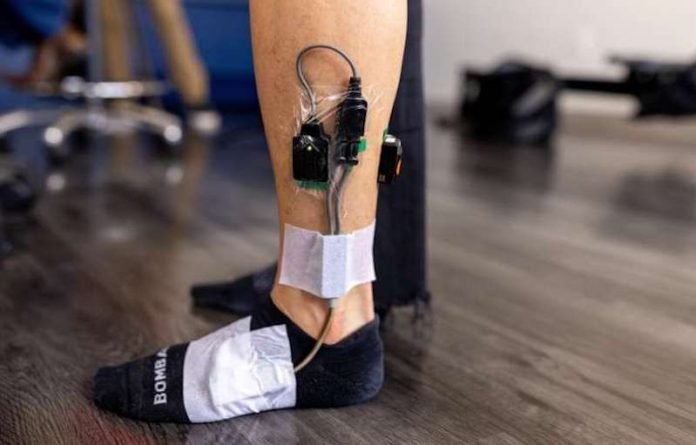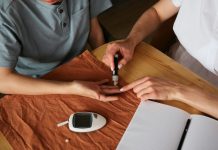
In a study from the University of Houston, scientists found the soleus muscle in the calf, though only 1% of your body weight, can do big things to improve the metabolic health in the rest of your body when you are sitting.
Researchers discovered such an approach for optimal activation—the pioneering “soleus pushup” (SPU) could effectively elevate muscle metabolism for hours, even while one is sitting.
The soleus, one of 600 muscles in the human body, is a posterior leg muscle that runs from just below the knee to the heel.
The research suggests the soleus pushup’s ability to sustain an elevated oxidative metabolism to improve the regulation of blood glucose is more effective than any popular methods currently touted as a solution including exercise, weight loss, and intermittent fasting.
Oxidative metabolism is the process by which oxygen is used to burn metabolites like blood glucose or fats, but it depends, in part, on the immediate energy needs of the muscle when it’s working.
Muscle biopsies revealed there was minimal glycogen contribution to fueling the soleus. Instead of breaking down glycogen, the soleus can use other types of fuels such as blood glucose and fats.
Glycogen is normally the predominant type of carbohydrate that fuels muscular exercise.
Building on years of research, the team developed the soleus pushup, which activates the soleus muscle differently than when standing or walking.
The method targets the soleus to increase oxygen consumption—more than what’s possible with these other types of soleus activities, while also being resistant to fatigue.
In brief, while seated with feet flat on the floor and muscles relaxed, the heel rises while the front of the foot stays put.
When the heel gets to the top of its range of motion, the foot is passively released to come back down. The aim is to simultaneously shorten the calf muscle while the soleus is naturally activated by its motor neurons.
While the movement might look like walking (though it is performed while seated) it is the exact opposite, according to the researchers.
When walking, the body is designed to minimize the amount of energy used, because of how the soleus moves. The new method flips that upside down and makes the soleus use as much energy as possible for a long duration.
The researchers are quick to point out that this is not some new fitness tip or diet of the month. It’s a potent physiological movement that capitalizes on the unique features of the soleus.
If you care about blood sugar, please read studies that artificial sweeteners could affect your blood sugar, and Cinnamon could help control blood sugar in people with prediabetes.
For more information about blood sugar, please see recent studies about why diabetes strongly raises the risk of severe COVID-19, and results showing green tea extract could help reduce gut inflammation and blood sugar.
The study was conducted by Marc Hamilton et al and published in the journal iScience.
Copyright © 2022 Knowridge Science Report. All rights reserved.



